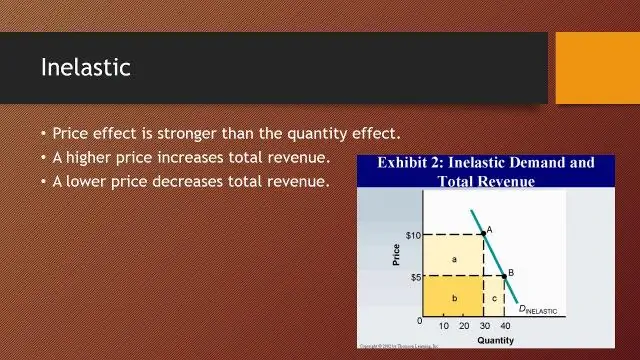- Author Rachel Wainwright [email protected].
- Public 2023-12-15 07:39.
- Last modified 2025-11-02 20:14.
Nosepam
Nozepam: instructions for use and reviews
- 1. Release form and composition
- 2. Pharmacological properties
- 3. Indications for use
- 4. Contraindications
- 5. Method of application and dosage
- 6. Side effects
- 7. Overdose
- 8. Special instructions
- 9. Application during pregnancy and lactation
- 10. Use in childhood
- 11. In case of impaired renal function
- 12. For violations of liver function
- 13. Use in the elderly
- 14. Drug interactions
- 15. Analogs
- 16. Terms and conditions of storage
- 17. Terms of dispensing from pharmacies
- 18. Reviews
- 19. Price in pharmacies
Latin name: Nozepam
ATX code: N05BA04
Active ingredient: oxazepam (oxazepam)
Producer: Organika, JSC (Russia), Olainfarm (Latvia)
Description and photo updated: 28.08.

Nozepam is a drug with anxiolytic, sedative, hypnotic, weak anticonvulsant and muscle relaxant effect.
Release form and composition
Dosage form - tablets (10 pcs. In blisters, in a cardboard box 5 packs; 50 pcs. In light-protective glass cans or in polymer cans, in a cardboard box 1 can; each pack also contains instructions for the use of Nozepam) …
Active ingredient: nozepam (oxazepam), its content in 1 tablet is 10 mg.
Excipients: potato starch, milk sugar (lactose), talc, calcium stearate.
Pharmacological properties
Pharmacodynamics
Nozepam is an anxiolytic (tranquilizer) of the benzodiazepine series. It has sedative-hypnotic, anticonvulsant and central muscle relaxant properties.
The main effects of the drug:
- Strengthening the inhibitory effect of GABA (gamma-aminobutyric acid, which is a mediator of pre- and postsynaptic inhibition in all parts of the central nervous system) on the transmission of nerve impulses;
- Reducing the excitability of the subcortical structures of the brain (in particular, the limbic system, thalamus, hypothalamus), inhibition of polysynaptic spinal reflexes;
- Stimulation of benzodiazepine receptors, which are located in the allosteric center of postsynaptic GABA receptors of the ascending activating reticular formation of the brain stem, as well as interneurons of the lateral horns of the spinal cord.
The anxiolytic effect of oxazepam is based on the effect on the amygdala complex of the limbic system, it manifests itself mainly as a decrease in emotional stress, relaxation of anxiety, anxiety and fear.
The sedative effect of Nozepam occurs due to the effect on the reticular formation of the brain stem, as well as the effect on the nonspecific nuclei of the thalamus. The effect is manifested in the form of a decrease in the symptoms of neurotic etiology (fear, anxiety).
The main mechanism of the hypnotic action of oxazepam lies in the inhibition of cells of the reticular formation of the brain stem.
Carrying out therapy helps to reduce the impact of stimuli (emotional, autonomic and motor) that disrupt the mechanism of falling asleep.
The anticonvulsant effect of oxazepam is due to increased presynaptic inhibition. The substance does not relieve the excited state of the focus, but suppresses the spread of epileptogenic activity.
The mechanism of central muscle relaxant action is based on the inhibition of polysynaptic, and to a lesser extent - monosynaptic, spinal afferent inhibitory pathways. Direct inhibition of muscle and motor nerve function may also occur.
Oxazepam has practically no effect on productive symptoms of psychotic genesis (in the form of acute delusional, hallucinatory, affective disorders), a decrease in the severity of affective tension, delusional disorders is observed in rare cases.
Pharmacokinetics
Oxazepam after oral administration is absorbed slowly, in full. Binds to plasma proteins at 97%. The time to reach C max (maximum concentration of the substance) is in the range from 1 to 4 hours. After taking a dose of 30 mg, C max is 450 ng / ml. Penetrates through the blood-brain and placental barriers, into breast milk.
Metabolism occurs in the liver with the formation of glucuronides, which have no pharmacological activity. T 1/2 (half-life) - from 5 to 15 hours. Excretion is carried out with feces and urine.
Equilibrium concentration is achieved within 1-3 days of treatment. With repeated administration, a minimal accumulation of the substance is observed (oxazepam belongs to benzodiazepines with short and medium T 1/2), after the termination of treatment it is quickly excreted.
Indications for use
- Tension, anxiety and fears of any origin nature;
- Vegetative lability in women;
- Neuroses, sleep disorders and hyperexcitability in chronic alcoholism.
Contraindications
Absolute:
- Acute intoxication with drugs that cause depression of the central nervous system (in particular, drugs with hypnotics, narcotic analgesics);
- Acute alcohol intoxication with a weakening of vital functions;
- Myasthenia gravis;
- Shock;
- Severe chronic obstructive pulmonary disease (in patients with progressive respiratory failure);
- Coma;
- Angle-closure glaucoma (during an acute attack or in the presence of a predisposition);
- Severe depression (associated with the likelihood of developing suicidal tendencies);
- Acute respiratory failure;
- Age under 18;
- Pregnancy (especially during the first trimester), lactation;
- Individual intolerance to the components of the drug.
Relative (Nozepam is prescribed under medical supervision):
- Hepatic / renal impairment;
- Complicated history of drug dependence;
- Presence of a tendency to abuse psychoactive drugs;
- Spinal / cerebral ataxias;
- Hyperkinesis;
- Psychosis (associated with the likelihood of paradoxical reactions);
- Organic brain diseases;
- Established / suspected sleep apnea
- Hypoproteinemia;
- Elderly age.
Nozepam, instructions for use: method and dosage
Nosepam tablets should be taken orally. Food intake does not affect the effectiveness of the drug.
Therapy begins with a dose of 10 mg 2-3 times a day. The average effective dose for outpatient treatment is 30-50 mg per day, for inpatient treatment, especially in severe and acute conditions, it can reach 120 mg per day.
For insomnia, appoint 10-30 mg 45-60 minutes before bedtime.
With alcohol withdrawal - 10-30 mg 3-4 times a day.
For the elderly, the initial dose of Nozepam is 10 mg 3 times a day. Depending on the indications, you can take 10 mg once a day. If necessary, but subject to good tolerance, a single dose is increased to 20 mg 3 times a day. For patients over 65 years of age, the highest permitted daily dose is 40 mg.
The duration of therapy is determined individually, depending on the patient's condition and the effectiveness of therapy. The average duration is 14-28 days.
Side effects
- Frequent: general weakness, drowsiness, increased fatigue, headache, anxiety, muscle weakness, ataxia, paradoxical reactions, decreased libido, impaired urination, hypotension, allergic skin reactions (itching, rash, urticaria), addiction, drug dependence;
- Rare: dyspepsia, yellowness, impaired liver function, dry mouth, photophobia, speech disorder, tremors, euphoria, photophobia, bulimia, memory impairment, coordination of movements and gait, leukopenia.
If the recommended dose of Nozepam is exceeded, the following are possible: inhibition of the central nervous system (drowsiness, confusion, decreased reflexes, lethargy and even coma), ataxia, hypotension, hypnotic state.
Overdose
The main symptoms: stunnedness, decreased reflexes, drowsiness (in the case of a single excess of the therapeutic dose by 10 times, sleep occurs, from which the patient can get out on his own), paradoxical agitation, confusion, deep sleep, ataxia, dysarthria, decreased response to pain irritations, nystagmus (visual impairment), bradycardia, tremor, shortness of breath or shortness of breath, severe weakness, decreased blood pressure, collapse, depression of respiratory / cardiac activity, coma.
Therapy: prescribe gastric lavage, intake of activated charcoal, forced diuresis, symptomatic treatment (includes maintaining breathing and blood pressure). Hemodialysis is ineffective. In a hospital setting, flumazenil is used as a specific antagonist.
special instructions
During the period of therapy, the use of ethanol is strictly prohibited.
Patients with renal / hepatic insufficiency and during a long course require monitoring of the picture of peripheral blood and liver enzymes.
In elderly patients and those with a tendency to abuse drugs, the decrease in blood pressure associated with taking Nozepam can lead to impaired cardiac activity.
The increase in the likelihood of drug dependence increases with the use of large doses, a significant duration of the course of therapy, in patients with a burdened history of alcohol or drug dependence. Long-term use of Nozepam is possible only in consultation with your doctor.
Abrupt termination of treatment is unacceptable, which is associated with the likelihood of a withdrawal syndrome (in the form of headache, myalgia, anxiety, tension, confusion, irritability; in severe cases, the syndrome manifests itself as paresthesia in the extremities, derealization, photophobia, hyperacusis, depersonalization, epileptic seizures, etc.) hallucinations).
In the event of unusual reactions in the form of increased aggressiveness, acute states of excitement, feelings of fear, thoughts of suicide, hallucinations, increased muscle cramps, difficult falling asleep, superficial sleep, Nosepam is canceled.
Influence on the ability to drive vehicles and complex mechanisms
Nozepam inhibits the work of the central nervous system, therefore, during the period of therapy, one should refrain from driving a car and performing potentially dangerous work that requires increased attention and a high reaction rate.
Application during pregnancy and lactation
Taking Nozepam is not recommended during pregnancy. The drug can be used only in exceptional cases and in the presence of vital indications. Oxazepam has a toxic effect on the fetus; against the background of its use in the first trimester of pregnancy, the risk of developing congenital defects increases. Reception of therapeutic doses in the II-III trimesters can lead to depression of the central nervous system of the newborn. With constant use during pregnancy, it is possible that a newborn may develop physical dependence with the development of a withdrawal syndrome.
The use of Nozepam immediately before childbirth or during childbirth can lead to respiratory depression, decreased muscle tone, hypotension, hypothermia, and a weak sucking act (flaccid baby syndrome) in the newborn.
During lactation, taking Nozepam is contraindicated.
Pediatric use
Patients under 18 years of age are not prescribed Nozepam.
Children, especially young children, are highly sensitive to the central nervous system depressing action of benzodiazepines.
With impaired renal function
In renal failure, Nozepam is prescribed under medical supervision.
For violations of liver function
In liver failure, Nozepam is prescribed under medical supervision.
Use in the elderly
During the period of therapy, the condition of elderly patients should be monitored.
Drug interactions
Nozepam can interfere with the effectiveness of indirect anticoagulants.
The drug enhances the effect of alcohol, anticholinergics and other drugs that affect the central nervous system (sedatives, hypnotics, antiepileptic, psychotropic).
Analogs
Analogues of Nozepam are: Tazepam, Grandaksin, Oxazepam, Relanium, Sibazon, Oxazepam-Ferein, Phenazepam, Diazepam, Elenium.
Terms and conditions of storage
Store at temperatures up to 30 ºС, protected from light, out of reach of children.
The shelf life is 5 years.
Terms of dispensing from pharmacies
Dispensed by prescription.
Reviews about Nozepam
Reviews of Nozepam are few. Most of them indicate high efficiency and good tolerability of the drug. They also note the low cost of the product. The main disadvantage is the likelihood of developing a withdrawal syndrome or addiction.
Price for Nosepam in pharmacies
The approximate price for Nozepam (50 tablets) is 60 rubles.

Anna Kozlova Medical journalist About the author
Education: Rostov State Medical University, specialty "General Medicine".
Information about the drug is generalized, provided for informational purposes only and does not replace the official instructions. Self-medication is hazardous to health!






